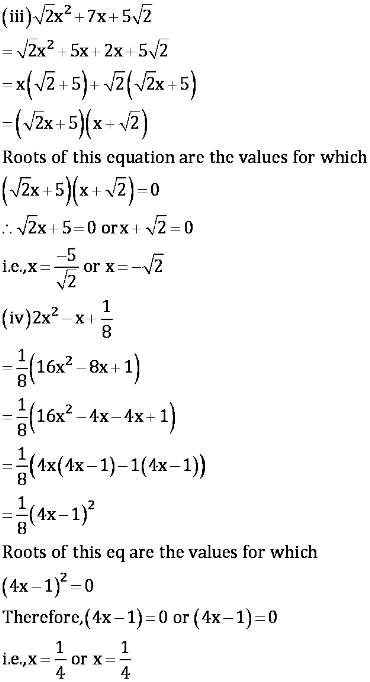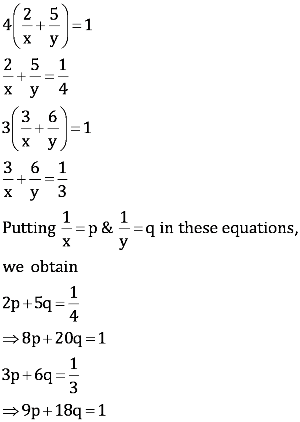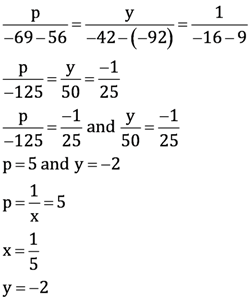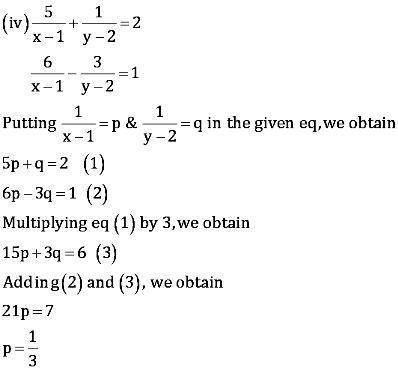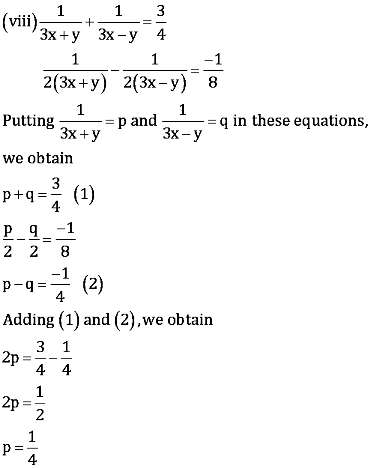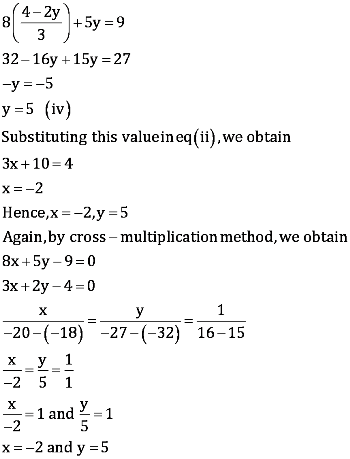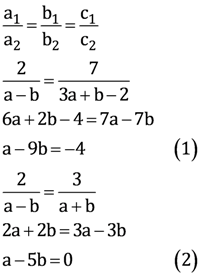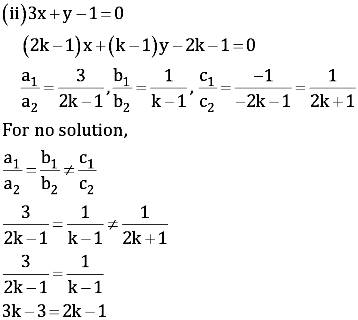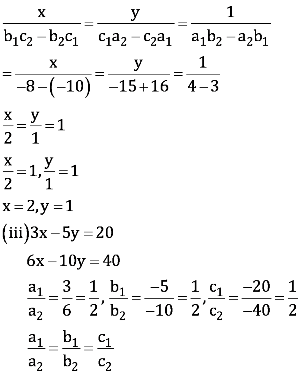Question 4:
Form the pair of linear equations in the following problems and find their solutions (if they exist) by any algebraic method:
(i)A part of monthly hostel charges is fixed and the remaining depends on the number of days one has taken food in the mess. When a student A takes food for 20 days she has to pay Rs 1000 as hostel charges whereas a student B, who takes food for 26 days, pays Rs 1180 as hostel charges. Find the fixed charges and the cost of food per day.
(ii)A fraction becomes 1/3 when 1 is subtracted from the numerator and it becomes 1/4 when 8 is added to its denominator. Find the fraction.
(iii)Yash scored 40 marks in a test, getting 3 marks for each right answer and losing 1 mark for each wrong answer. Had 4 marks been awarded for each correct answer and 2 marks been deducted for each incorrect answer, then Yash would have scored 50 marks. How many questions were there in the test?
(iv) Places A and B are 100 km apart on a highway. One car starts from A and another from B at the same time. If the cars travel in the same direction at different speeds, they meet in 5 hours. If they travel towards each other, they meet in 1 hour. What are the speeds of the two cars?
(v)The area of a rectangle gets reduced by 9 square units, if its length is reduced by 5 units and breadth is increased by 3 units. If we increase the length by 3 units and the breadth by 2 units, the area increases by 67 square units. Find the dimensions of the rectangle.
Answer:
(i)Let x be the fixed charge of the food and y be the charge for food per day.
According to the given information,
x + 20y = 1000 (1)
x + 26y = 1180 (2)
Subtracting equation (1) from equation (2), we obtain
6y = 180
y = 30
Substituting this value in equation (1), we obtain
x + 20 × 30 = 1000
x = 1000 − 600
x = 400
Hence, fixed charge = Rs 400
And charge per day = Rs 30
(ii) Let the fraction be x/y.
According to the given information,

Subtracting equation (1) from equation (2), we obtain
x = 5 (3)
Putting this value in equation (1), we obtain
15 − y = 13
y = 12
Hence, the fraction is 5/12.
(iii)Let the number of right answers and wrong answers be x and y respectively.
According to the given information,
3x − y = 40 (1)
4x − 2y = 50
⇒ 2x – y = 25 (2)
Subtracting equation (2) from equation (1), we obtain
x = 15 (3)
Substituting this in equation (2), we obtain
30 – y = 25
y = 5
Therefore, number of right answers = 15
And number of wrong answers = 5
Total number of questions = 20
(iv)Let the speed of 1st car and 2nd car be u km/h and v km/h.
Respective speed of both cars while they are travelling in same direction = (u – v) km/h
Respective speed of both cars while they are travelling in opposite directions i.e., travelling towards each other = (u + v) km/h
According to the given information,
5(u – v) = 100
⇒ u – v = 20 …. (1)
1(u + v) = 100 ….(2)
Adding both the equations, we obtain
2u = 120
u = 60 km/h ….. (3)
Substituting this value in equation (2), we obtain v = 40 km/h
Hence, speed of one car = 60 km/h and speed of other car = 40 km/h
(v) Let length and breadth of rectangle be x unit and y unit respectively.
Area = xy
According to the question,
(x – 5) (y + 3) = xy – 9
⇒ 3x – 5y – 6 = 0 (1)
(x + 3) (y + 2) = xy + 67
⇒ 2x + 3y – 61 = 0 (2)
By cross-multiplication method, we obtain

Hence, the length and breadth of the rectangle are 17 units and 9 units respectively.


